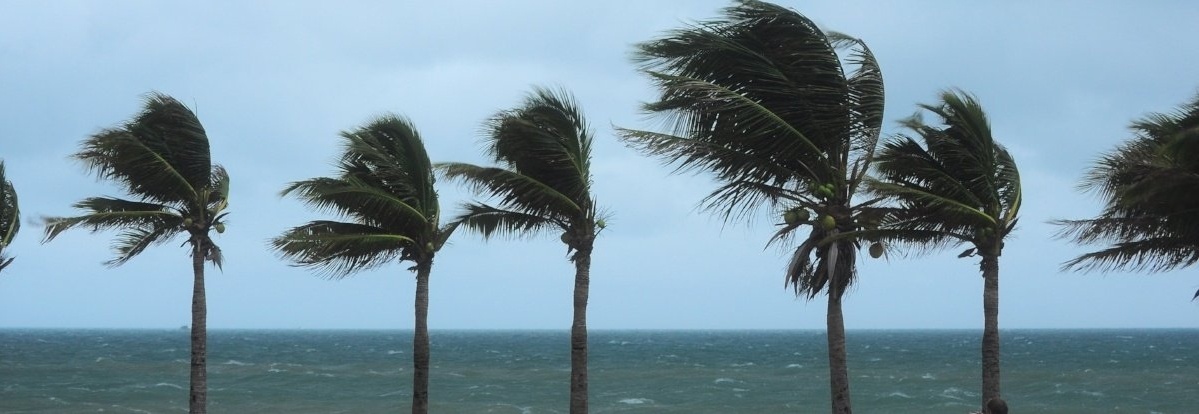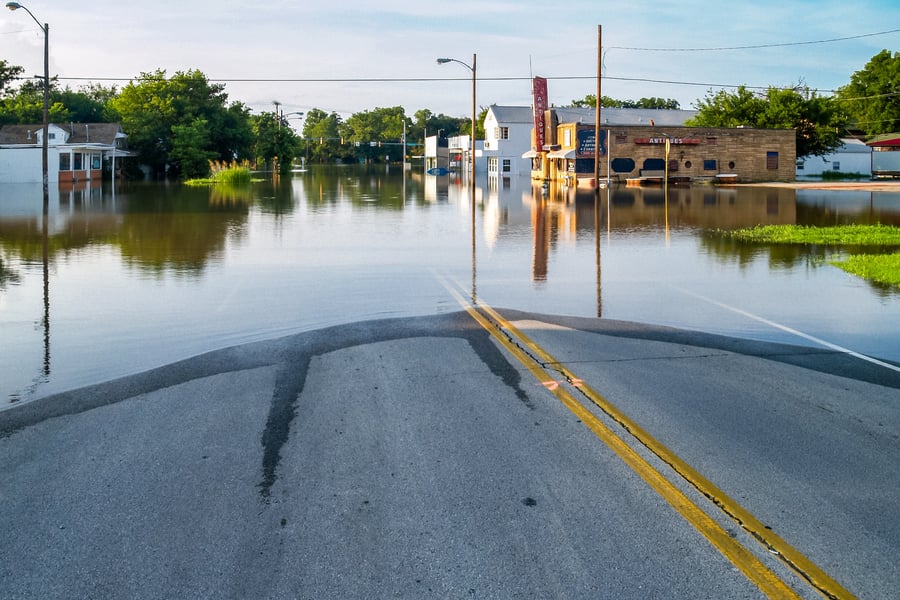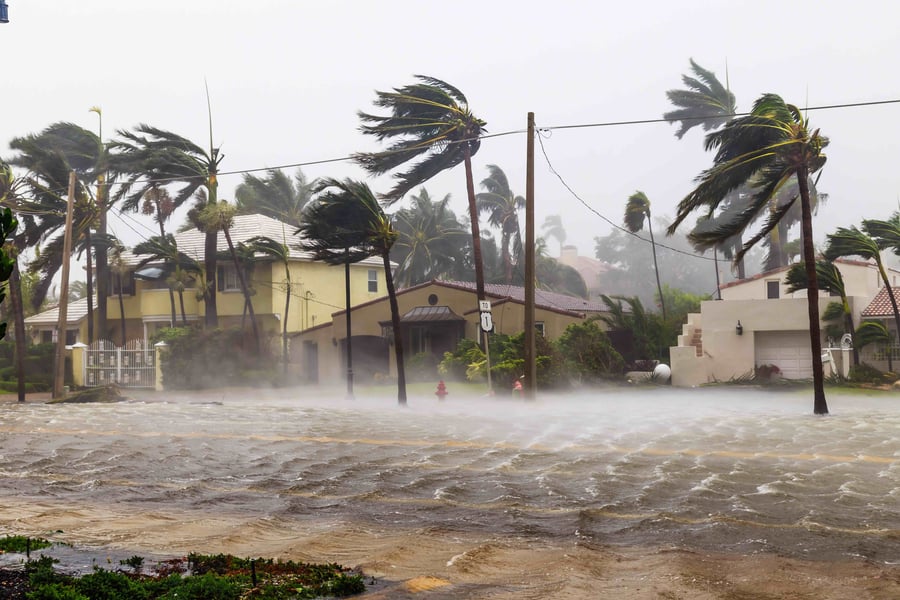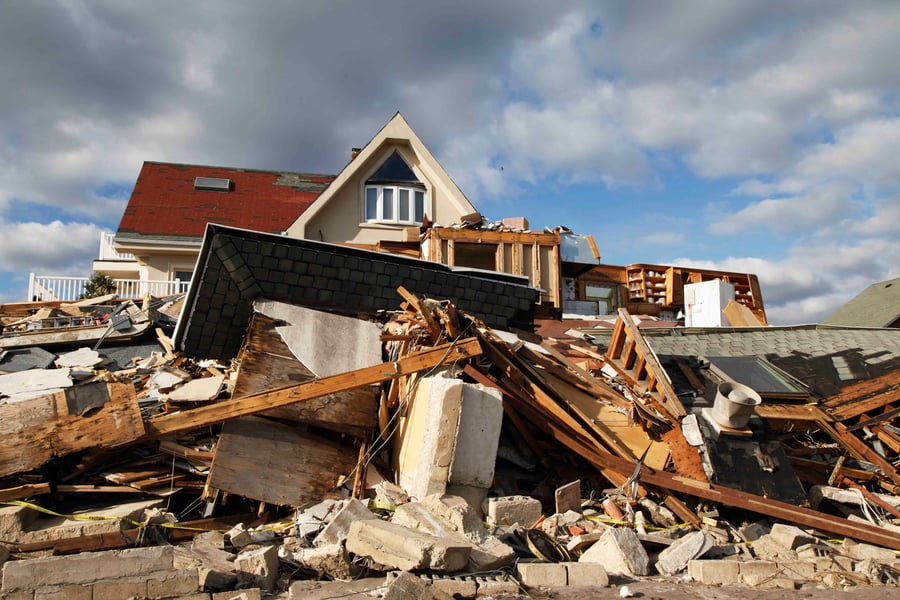The Hurricane Season Preparedness Checklist

Every year, millions of Americans living on or near either coast have to contend with the risks of hurricane season. According to data cited by National Geographic, the 2017 hurricane season was the most expensive in U.S. history, causing “more than $200 billion worth of damage from 17 named storms during the season.”
Large-scale hurricanes can devastate homes and cause major damage to utility and road systems, leaving homeowners without power or clean water for days (or longer). Preparing for hurricane season is crucial for minimizing the impact of a hurricane on your home as well as the risk to yourself and your family.
Getting Ready for Hurricane Season: FEMA’s Checklist for Homeowners
The Federal Emergency Management Agency (FEMA) provides a hurricane preparedness guide that includes extensive advice for homeowners to help them be ready for a hurricane. Inside the guide, there is a checklist of items that homeowners should prepare in advance of a hurricane for their “go bag.”
The checklist includes:
- Emergency Communication
- Contact info of family members, school officials, workplace contacts, doctors, etc. This should include both phone numbers and addresses.
- Cell phone(s) with extra batteries/chargers.
- AM/FM radio or a NOAA Weather Radio (with extra batteries).
- Medical Needs
- Medications to fill at least one week’s worth of treatments and copies of prescriptions/prescription documentation.
- Extra eyeglasses/contacts.
- Any medical equipment or assistive technologies you need (and backup batteries for them).
- First aid kit.
- Critical Documents
- Photo ID (driver’s license, passport, state ID, etc.).
- Cash and credit cards.
- Personal records (birth certificate, marriage certificate, etc.).
- Medical records.
- Financial information (bank account or credit card information).
- Property records (insurance information, deed/lease documents).
- Portable, waterproof container to safely store the above documents.
- Tools & Safety Items
- Flashlights with spare batteries.
- Multi-purpose tool.
- Matches or lighter in waterproof container.
- Whistle.
- Food/Supplies
- At least three days’ worth of water and non-perishable food.
- Infant formula and diapers for any babies.
- Pet food, supplies, toys, and extra water for any pets.
- Hygiene & Sanitation
- Soap/disinfectant/sanitizer.
- Paper towels and/or moist towelettes.
- Toilet paper.
- Bleach.
- Toothbrush and toothpaste.
- Personal toiletries.
- Protective Gear & Clothing
- Extra pairs of warm clothes.
- Sturdy shoes.
- Blankets or sleeping bags.
- Comfort & Priceless Items
- This can include items like books, puzzles, toys, photo albums, and valuables.
- Important Info for During the Hurricane
- Emergency broadcast channel # for your area.
- FEMA App for your smartphone/tablet.
- Evacuation route information.
- Location of the closest shelter.
- Prearranged meeting location for if your family gets separated.
These items comprise the majority of FEMA’s hurricane preparedness checklist. It is strongly recommended that you download the guide so you can review its full contents and print out the checklist therein ahead of time.
However, there are a few other things that you might want to do to prepare your home for a hurricane that aren’t covered by the checklist (which assumes you may need to evacuate your home).
Additional Hurricane Preparations for the Home
In addition to preparing a “go bag,” or, more likely, a “go trunk,” there are a few things that homeowners can do around the house to better safeguard it from a hurricane:
- Prepare Boards for Windows. A relatively thin piece of plywood or pressboard can make the difference between having an intact window and having a smashed-in one that lets in massive amounts of rain and debris. Measure the windows around your home and acquire some boards that can cover them. Alternatively, some companies offer shutters that can be rolled over your windows, but you may need to check with your local HOA (or your landlord) to see whether they’re allowed in your area.
- Check the Roof for Leaks/Loose Tiles. A visual inspection of the roof can reveal problems that may lead to moisture intrusion during a hurricane. For example, loose roof tiles could easily tear away during a hurricane, letting in water. Cracks in non-tiled roofs could also become a source of moisture intrusion. Fixing loose roof tiles or sealing cracks can help prevent moisture intrusion later.
- Move Lightweight Patio/Yard Furniture and Objects Indoors. Small or lightweight objects in your yard can be picked up by hurricane-force winds and thrown into the side of a home. Taking these items indoors can help to prevent additional damage to the home. Items that aren’t safe to bring inside, such as propane tanks or grills, should be anchored to the ground as best as possible to prevent them from moving. Trees should be trimmed down or removed to prevent them from falling onto the structure.
- Arrange Sandbag Barriers. Flooding is a common occurrence during a hurricane. Setting up sandbag barriers around the major entrances to your home can help to keep flood water out.
- Check Your Flood Insurance. A basic homeowner’s insurance policy may not cover flood damage. Before a hurricane hits, it’s important to review your insurance policy and check if it covers flood damage. If it does, be sure to verify what it covers, what the deductibles are, and whether it will pay for flood damage restoration services. If it doesn’t, consider adding flood damage coverage as soon as possible—it generally takes 30 days for new flood insurance coverage to go into effect.
These protective measures can help to limit the damage a hurricane will cause to your home. However, even the most well-prepared structure can be leveled by a severe enough hurricane. So, be prepared to follow an evacuation order on a moment’s notice if you hear about a hurricane approaching your area.
After the Storm: Water Damage Restoration and Moisture Meters
Once a hurricane passes, you may find that your home, despite your best efforts, has become damaged by water—this can happen to even the best-prepared homeowners. If your home is extensively damaged, it’s probably best to reach out to a water damage restoration expert as soon as possible. These experts have the tools and the training necessary to safely navigate a water-damaged structure.
The sooner such experts can be called in to remove excess water from your home, the better they’ll be able to limit the damage caused.
If the damage to your home is minimal, but you notice some signs of moisture intrusion, such as discolored walls/ceilings, musty odors, or warped flooring, it may be a good idea to try to pinpoint the source of the moisture intrusion right away. This is where a moisture meter for home inspection can be useful.
Moisture meters can help you track down where moisture in your structure is coming from so you can fix the problem that is letting water in. They can also help you determine the overall size and severity of the moisture problem, so you know whether it’s a minor leak that can be fixed later or a major issue that needs immediate professional attention.
In this way, a moisture meter can be an essential means of preparing for hurricane season (and its aftermath).
Which moisture meters should you use? The answer depends on your budget and level of expertise. The majority of homeowners would be most comfortable with a simple, easy-to-use device rather than a more robust and complicated one that is commonly used by a professional. However, more capable meters often have features that make them more versatile. With this in mind, here are a few different moisture meters that feature different levels of complexity but still have a more homeowner-friendly price tag:
- The Simple Option. The J-Lite moisture meter is specifically designed to be easy to use for people of all skill levels. The bright LEDs give a clear and easily-read indication of moisture content in both dark and well-lit areas.
- The Pinless Option. Delmhorst’s TechScan moisture meter is a high-quality pinless moisture testing device that can be used to quickly scan large areas. It has two reading scales (wood and reference) to allow for rapid checks of different materials in a building. This device is often used by professionals for its fast moisture scanning abilities.
- The Deluxe Option. The TechCheck PLUS meter combines the best of both pin-type and pinless moisture meter technologies to create a highly versatile, robust moisture testing tool. This meter can take fast moisture measurements in pinless mode and gather detailed information using the pin mode.
If you need more information about preparing for hurricane season, get the hurricane preparedness checklist at the link below. For advice on using moisture meters to prepare for and investigate hurricane damage, please contact us today.
Subscribe to Our Blog
Post Related

How Can Moisture Meters Help with Hurricane Damage?


